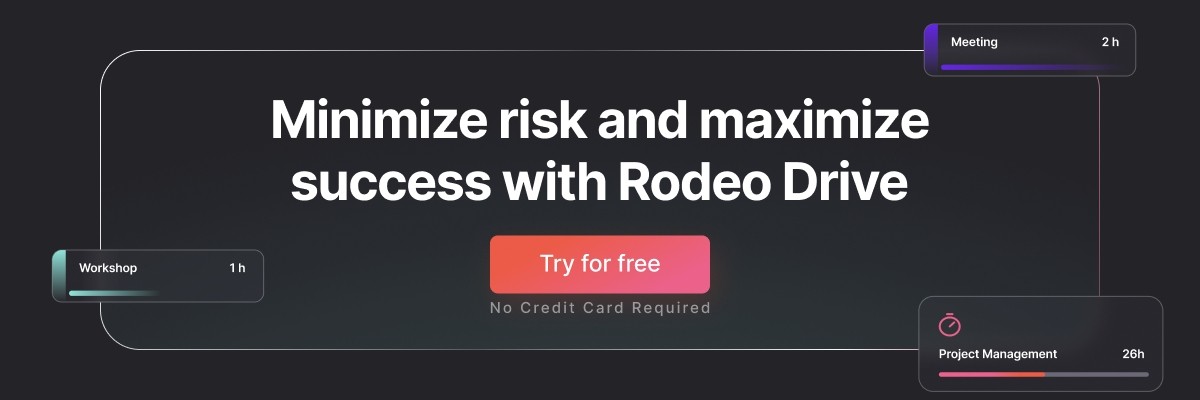Top 12 Project Management Methodologies to Keep Teams on Track
There’s no doubt that project management has a lot of moving parts. And when tasked with managing a complex project, figuring out the right workflows can be a challenge.
This is where project management methodologies come in, giving your projects structure by helping you adopt a standardized approach to your work.
However, when it comes to project management methodologies, there isn’t a one-size-fits-all solution. In this blog, we’ll discuss what you should look for in a methodology and introduce you to 12 options that might fit your project needs.
What is a project management methodology?
A project management methodology is a systematic framework or approach that’s used to plan, execute, monitor, and control projects. Project management methodologies usually provide a set of guiding principles, processes, tools, or best practices that help project managers steer their teams through the entire project life cycle.
In other words, these methodologies provide a structure for your projects that helps streamline your workflows, allowing your team to focus on the work at hand. They’ll often also specify the tools project managers need for success, such as risk registers and other project documentation.
Overall, the goal of a project management methodology is to help your team adopt a standardized approach to your projects, allowing you to produce consistent outcomes that deliver value for your clients and stakeholders.
Why bother using a project management methodology?
You might think that you don’t need a project management methodology. Perhaps your team is small, your project scope is limited, and your project requirements are well-defined. An ad-hoc approach will work just fine, right?
Well, not necessarily. There are many benefits to implementing a more structured project management methodology. This includes providing a structure to your workflows, reducing errors, and ensuring alignment on project goals.
Here’s a deeper look at some of the main benefits of implementing a project management methodology:
Improves efficiency
Project management methodologies outline the processes and best practices a project manager should follow to execute their project most effectively. In other words, the project team can hit the ground running according to these existing best practices rather than requiring the project manager to come up with new processes all on their own.
Having these processes already in place reduces redundancies, minimizing delays and optimizing team productivity in the process.
Lays the groundwork for collaboration
It’s difficult for a project to be successful if the project team members aren’t working together effectively. But what should that teamwork look like in practice?
Luckily, many project management methodologies describe which team roles are necessary for an effective team, and the channels in which communication should take place.
For example, the Scrum method clearly states that teams will need a Scrum master and product owner, who will work together with the development team during regular meetings — such as the sprint retrospective meeting.

Helps your team stay adaptable
The reason there are so many different methodologies is because there are so many different types of projects, each with its own needs.
For instance, a construction project must be completed according to a strict step-by-step process, whereas a software development project might deal with new feature requests and bug fixes that the team must tackle along the way.
Because of these differences, construction projects tend to need a structured and linear methodology, whereas product development projects need an approach that’s highly flexible and adaptable.
Each methodology offers its own degree of adaptability. In considering the different approaches on this list, you can choose the one that’s best suited to your team’s needs.
Related: Product Manager vs. Project Manager: Understanding the Differences
Factors to consider when deciding on a project management methodology
With 12 different project management methodologies on our list below, you’re probably wondering how you can even begin to decide which one is right for your team.
Luckily, there are a couple of factors to consider that can help point you in the right direction.
Project type
Some projects are best suited for a particular type of methodology. For example, software projects tend to follow an agile methodology because these projects need high flexibility and adaptability. There’s no need to choose a methodology outside of the industry standard if you don’t need to.
Start by considering your project requirements. What does your team need most in a methodology? What type of processes would be detrimental to your project or slow down your project team?
Team experience
Your project itself will take up a lot of time, so you don’t want your team to waste valuable hours having to learn the ins and outs of a new project management methodology. This is why you might want to consider a methodology that’s familiar to your team or one they already have experience with.
Resource constraints
Some project management methodologies are made for teams with more resources — in other words, those equipped to handle scope changes and other bumps in the road — whereas others are more rigid and inflexible.
Consider where your project falls in terms of resource constraints. If your stakeholders suddenly asked to change your project scope, would you have the resources to successfully do so? Or, are you operating on a tight budget and timeline?
These questions are important to consider, as a project manager with fewer resources might want to plan every step of the project in advance to ensure those resources are allocated most effectively.
On the other hand, a team with excess resources may find that their deliverables will benefit from collecting feedback at various stages of the project and adapting their project plans accordingly.

Stakeholder involvement
You may want to consider how involved your stakeholders want to be in the project before selecting a methodology, as some methodologies involve stakeholders in the project processes more than others.
For example, the waterfall method might be fine for a project where the stakeholders are hands-off once they’ve approved the project plan, whereas Kanban might work best for stakeholders who constantly want to know what the project team is working on.
12 popular project management methodologies and when to use them
Now that we’ve covered what you’ll want to look for in a methodology, it’s time to learn more about 12 popular project management methodologies out there.
1. Waterfall methodology
The waterfall method is a very traditional approach to project management, in which tasks are completed linearly through distinct phases. Each phase needs to be completed before the next one can begin.
The idea is that tasks flow downwards through the project like a waterfall. As such, there isn’t much opportunity to revisit previous phases once they’re completed.
And because projects that follow waterfall methodology usually stick to a strict project plan, teams can’t adapt to new project changes once everything is already underway.

When should you use the waterfall method?
The waterfall methodology should only be used in projects where the requirements are clearly defined and the scope is stable and unlikely to change. Should your project encounter scope creep, it’ll be challenging to revise previously completed work using this method.
Construction and manufacturing projects are two examples of the types of projects that work well with waterfall project management. These projects tend to follow a strict step-by-step process and aren’t likely to undergo extreme scope change — making them perfect waterfall candidates.
2. Agile methodology
Agile project management methodologies prioritize speed, adaptability, cross-functional collaboration, and continuous improvement. Several different methodologies fall under the agile umbrella, but all tend to share these characteristics.
Agile methodologies allow teams to break their work down into small, manageable tasks that are executed as part of a short work sprint. After the sprint is completed, the project team collects feedback and reassesses its priorities before embarking on the next sprint.
Whereas traditional project management methodologies tend to stick to a predetermined plan and resist change while the project is in progress, agile frameworks do not stick to a long-term plan. Instead, they’re easily adaptable and capable of embracing change with open arms.
When should you use an agile approach?
Because the agile framework embraces change, it’s most commonly used in projects where change is to be expected. Software development is a great example of this, as an agile approach can accommodate late-stage feature requests and add them to the sprint backlog.
Product development projects also benefit from this approach because agile frameworks are known for their speed, which can cut down on the lengthy timelines you might see in more traditional project management.
That said, agile methods can be used by teams in a range of industries that need a collaborative approach with short delivery cycles. Marketing campaigns, design projects, or content creation may all benefit from this approach due to its ability to quickly respond to changing market demands and new trends.
3. Critical path methodology
The critical path methodology helps you determine the minimum amount of time needed to complete a project by identifying the longest sequence of dependent tasks involved in the project.
To implement critical path, you’ll need to create a network diagram that maps out all tasks needed to complete the project, along with their dependencies and durations. The sequence of tasks with the longest total duration is the critical path — meaning any delays to these tasks will delay the project timeline.
The idea is that creating this network will help project managers prioritize the tasks that are most essential for the on-time completion of the project, allowing them to allocate resources most effectively.
When should you use the critical path method?
Because the critical path method is built around the need to properly manage your project timeline, the methodology is best suited for projects with stringent time constraints.
The critical path method isn’t limited to a particular industry, as large-scale construction, manufacturing, and even event planning projects can all benefit from this approach. In these projects, the sequence of tasks is extremely important for the project to be completed on time.
4. Scrum methodology
Scrum is an agile project management methodology in which work is organized into short sprints lasting two to four weeks. Scrum teams have a set list of team roles and responsibilities, which includes the Scrum master, product owner, and the development team.
The Scrum master and the product owner work together to manage all Scrum events and artifacts. Scrum events include daily standup meetings with the team, along with retrospectives where team members reflect on the sprint and look for areas of improvement.
Scrum artifacts include things like the product backlog, which is a list of all features that fall under a project’s scope that need to be assigned to future project sprints. Each sprint has a set list of objectives that the project team needs to complete. Once all sprints are complete, the project should be finished.

When should you use the Scrum methodology?
The Scrum methodology isn’t for all teams. While it’s too structured for some teams, others find that its iterative approach is just right for their project needs.
In general, Scrum is best suited for projects with a high level of complexity — such as product development, which tends to require an approach to projects that evolves as the project progresses.
The Scrum method also promotes a trial-and-error approach to projects, which makes it a great project management methodology in cases that require a high level of innovation. Often these types of projects come with highly involved stakeholders as well, which works well with Scrum since sprint reviews allow stakeholders to provide project feedback.
5. Lean methodology
The core principle of the lean project management is to minimize waste and maximize value. To implement the lean method, you’ll need to identify and eliminate the project activities that don’t add value to the project to streamline your processes and optimize your use of resources.
Think of lean as a way to get more done with fewer resources, as the goal is to help your team get the same amount of work done with less time and budget.
When should you use the lean methodology?
While lean originally derived from reducing physical product waste during the production process of companies like Ford, Toyota, and Motorola, it’s now used as a framework for eliminating wasteful practices in general.
Although it’s still used in industries like manufacturing and logistics, it can be used for any team in which optimizing processes and resource utilization is necessary to maintain a competitive edge.
Projects that experience uncertainty, rapid change, and evolving requirements may find lean useful for eliminating waste. Startups and other entrepreneurial ventures often choose to adopt this methodology, as it helps them accelerate innovation while conserving resources.
6. PRINCE2
PRINCE2 stands for “Projects in Controlled Environments,” and it’s known for being a process-oriented framework with a strong emphasis on planning, cost analysis, and risk mitigation.
PRINCE2 is similar to waterfall in that it requires the project manager to map out each stage of the project, who will work on what, and when the work will be completed.
The PRINCE2 process follows these 7 stages:
- Starting up a project
- Initiating a project
- Directing a project
- Controlling the project stages
- Managing product delivery
- Managing stage boundaries
- Closing a project
When should you use PRINCE2?
PRINCE2 is best suited for project environments where project governance, quality management, and accountability are top priorities. It’s a great fit for large projects with high levels of predictability.
As such, IT, construction, and government sectors are top use cases for the PRINCE2 project management methodology. Teams that struggle with the waterfall approach should avoid PRINCE2 due to the similarities between the two.
7. Kanban methodology
The Kanban methodology is characterized by its visual approach to project management, in which a Kanban board is used to manage project tasks and control workflows. Kanban boards usually divide project phases into columns with tasks as cards that move through the board as work progresses.
This board-based approach brings transparency to the project team’s work, allowing everyone to see exactly where each project task is up to at any point in time.
The Kanban method operates on a pull system, meaning that work is only pulled into the system when the team can take on more work. By limiting the amount of work that can be in progress at a given time, the Kanban approach can help prevent bottlenecks and burnout.

When should you use the Kanban method?
Kanban is known for its high degree of flexibility, which makes it a good fit for teams that take an iterative approach to their projects, such as software development or IT operations.
Since Kanban’s flexible nature allows you to accommodate new priorities or requirements along the way, it’s useful for teams with variable workloads and a limited ability to plan ahead.
That said, it can be difficult for large teams to scale Kanban since a large team will have far more in-progress tasks on their Kanban board at any given time, making it easy for project activities to get lost in the shuffle.
Also read: How to Visualize Project Progress
8. Six Sigma
Six Sigma is commonly used as an approach to quality management, as the goal is to continuously improve project processes and eliminate defects. To achieve this, Six Sigma requires you to examine your data to eliminate variations that cause errors or inefficiencies.
This methodology uses a problem-solving strategy called DMAIC, which is used to identify the root causes of issues and implement corrective improvements.
DMAIC stands for Define, Measure, Analyze, Improve, Control, and represents the following processes:
- Define: Define the problem, project goals, and customer requirements.
- Measure: Collect data to establish a project baseline and quantify your current project performance.
- Analyze: Examine your data to identify root causes of inefficiencies or defects.
- Improve: Devise solutions to address the identified root cause of the inefficiencies impacting your current process.
- Control: Implement control measures to ensure your improvements are successful and that they remain in place.
When should you use Six Sigma?
Six Sigma is most applicable to industries where high levels of quality and consistency are top priorities. Teams in these fields also need to have access to a large amount of data to implement this approach.
For this reason, Six Sigma is common for projects in fields like healthcare, finance, or other service industries that place high value on operational excellence and customer satisfaction.
9. Project Management Body of Knowledge (PMBOK)
The Project Management Body of Knowledge (PMBOK), created by the Project Management Institute, is a set of best practices to consider when working on a project.
Although it isn’t technically a methodology, the PMBOK divides projects into five phases: initiating, planning, executing, monitoring, and closing — which gives project managers a structured approach to their projects.
The PMBOK is certainly broader than some of the other project management methodologies on this list, meaning you’ll need to decide which tasks to include under each project phase since the PMBOK doesn’t dictate these tasks.
Because of this, you may want to pair the PMBOK’s best practices with a different methodology on this list. Although PMI doesn’t specifically endorse a specific methodology, you may find that the waterfall approach is closely aligned with PMBOK’s phases.
When should you use PMBOK?
Because PMBOK provides a flexible framework, its phased-based approach can be used on standard projects in any industry. However, the PMBOK alone is really only suitable for smaller teams working on straightforward projects unless you pair it with an additional methodology.
10. Critical chain project management
Whereas the critical path methodology helps you identify the tasks that are most critical to the project’s on-time completion, critical chain project management is focused on identifying the resources needed to complete those project tasks. In other words, it takes the critical path you’ve already created and adds resource availability to it.
Adding resources to your critical path creates extra assurance that your project will be completed on time, as you’re able to add buffers of time around the tasks with greater resource uncertainty. Think of it as a more detailed version of the critical path method.
When should you use the critical chain method?
Similar to the critical path use case, the critical chain approach is useful for projects where time or resource constraints are a main concern. Although it can be used by both small and large teams, it’s particularly useful in complex projects where the work is more manageable when the necessary resource allocation is determined ahead of time.
11. Extreme project management (XPM)
Think of extreme project management as an approach that’s the opposite of the waterfall method. Instead of planning everything ahead of time, XPM embraces change every step of the way. Everything from budget to your final deliverables can be changed regardless of how far along the project is.
Extreme project management keeps teams highly adaptable because it encourages frequent team communication and collaboration, which shortens feedback loops and allows teams to immediately correct their work based on this feedback.
When should you use extreme project management?
Extreme project management makes the most sense for projects operating in highly dynamic and uncertain environments. Industries like software development, product innovation, and creative fields where agility and responsiveness to trends are top priorities.
12. Scrumban methodology
As its name suggests, the Scrumban methodology is a combination of Kanban and Scrum, pairing Kanban’s visual principles with Scrum’s iterative approach.
To do this, Scrumban requires work to be organized in a backlog and pulled into the team’s workflow as their capacity allows, rather than being tied to a fixed sprint in Scrum. This allows teams to pair Kanban’s ability to adapt to changing priorities with Scrum’s approach to planning, review, and reflection.

When should you use the Scrumban method?
Teams in need of Scrum’s structure alongside a highly visual and flexible approach — which Kanban provides — should consider Scrumban.
Because Scrumban strikes a good balance between structured and adaptive methodologies, it’s also useful for teams in the process of transitioning from traditional project management methodologies to agile methods. This is because Scrumban emphasizes incremental implementation and its visual focus helps with transparency — two things that would be helpful for project managers adjusting to a new tool.
Keep your projects on track with Rodeo Drive
Once you’ve landed on a project management methodology, you might think you’re ready to get to work on your project. Not so fast though — to keep your project work organized, you’ll first need to implement a project management tool.
Rodeo Drive is a robust project management software solution that can help you do just that. Let’s take a look at some of Rodeo Drive’s top features:
- Phased budgeting: Rodeo Drive offers phased budgeting to help prevent overspending at every step of your project.
- In-app time tracking: Our tool offers time tracking that’s connected to your budget for a real-time look at the cost of your team’s time that’s been spent on the project.
- Customizable invoicing: Create personalized invoices directly from Rodeo Drive in just a few clicks.
- Timeline-view planning: Rodeo Drive’s planner provides an overview of your planned project activities and team member capacity to prevent burnout.
- Comprehensive reporting: Your Rodeo Drive reports will highlight your profit margin, employee productivity, and time registration, among other metrics.

Assigning project activities based on team capacity is simple in Rodeo Drive
Don’t just take our word for it — come and explore our platform for yourself. Signing up for Rodeo Drive is completely free (you won’t even have to enter a credit card).








